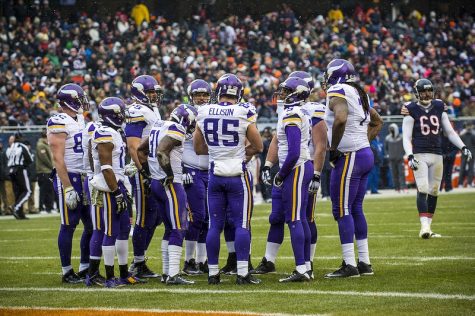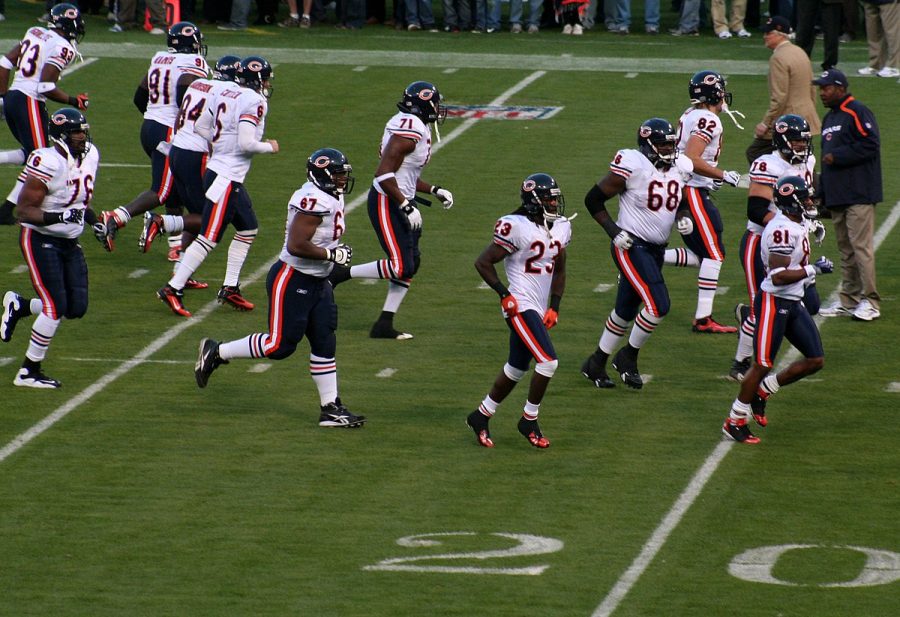Former Coach’s Win and Bears Loss: Historic Day for Franchise
March 14, 2023
The last game for the Chicago Bears during the 2022 season was meaningless. The Bears were a bad team with few good players and a simple direction: Losing is better than winning. It’s the opposite of what many people think, but allow me to explain.
The 2022 Bears season hinged on one thing, and it wasn’t wins and losses. Is Justin Fields the answer at QB? That was the only significant question that needed to be answered. In 15 games, Fields threw for 2,242 yards, rushed for 1,143 yards (which broke the Bears Franchise record for rushing yards by a quarterback), and was responsible for 25 touchdowns (8 rushing) and 11 turnovers. Fields did this with his leading receiver, tight end Cole Kmet with 544 yards receiving. His receivers were far from the upper echelon, but it’s what you should expect when the team is 3-14. With the supporting cast around him, Fields can prove that he can be the guy for the franchise who has never had a 30-touchdown or 4,000-yard passer.
So why is Jan. 8 so important? The Bears lost at home 29-13 to the Minnesota Vikings. Fields did not play because of a hip injury suffered the week prior. As a spectator on Jan. 8, watching Nathan Peterman and Tim Boyle play quarterback for the Bears is not something you expected when you bought the tickets in December. But that was not the most important event for the future of the franchise.
The most important event happened 1,089 driving miles southeast of Chicago in Houston. The Houston Texans (2-13-1) at noon Sunday, Jan. 8, owned the No. 1 overall pick in the upcoming draft, and losing to the Indianapolis Colts would clinch the No.1 pick. Both games kicked off at noon, and the Bears game finished first. The Bears losing against Minnesota meant that if Houston were to beat Indianapolis, the Bears would clinch the No. 1 overall selection in the NFL draft.
The Texans had the ball and were driving to try and win the game, down 31-24 with 58 seconds left in regulation. It was fourth and 20 on Indianapolis’ 28-yard line, Texans quarterback Davis Mills lined up in the backfield by himself. After the snap, he rolled to his right, and then back left, and put up one last desperation heave for the Texans. It was caught by Texans tight end Jordan Akins, who jockeyed for position among Colts defenders, for the touchdown.
The score was 31-30 with 50 seconds left. Texans head coach and former Bears head coach Lovie Smith had a decision to make: Kick the extra point to tie or go for the 2-point conversion to win. The long-term ramifications for the decision are yet to be known, but the short-term ramifications were simple: Win the game and lose the No. 1 overall selection to Chicago or try and tie the game and leave it up to his defense getting a stop and forcing overtime and still hope to be in play for the No. 1 overall pick. Smith opted for the 2-point conversion, and the rest is history. From the 2-yard line, Mills lined up in the shotgun, with wide receivers bunched to the near side, one receiver to the far side. He scanned his options and found who other than Akins in the middle of the end zone for a successful conversion. Houston would go onto win 32-31 against the Colts, winning a rather meaningless game and losing the first overall draft selection.
I walked out of Soldier Field with my friends after watching the Bears lose to the Vikings. No Bears fans seemed to care about the result of the game they just watched. Everyone was on their phone or finding a TV to watch the last minute unfold in Houston, knowing the possibility of having the No. 1 overall pick in the draft. When the Texans and Colts game ended, pandemonium erupted in the Soldier Field concourses as fans headed to their cars. There was a collective feeling that the Bears, who have not won a Super Bowl since 1985, may have just changed their franchise forever.
Now the Chicago Bears seem to have their quarterback of the future, the No. 1 overall pick and about $75 million in salary cap space. Second-year general manager Ryan Poles now has a question: Should he trade the No. 1 overall pick? Poles’ answer came March 10 in a trade with the Carolina Panthers, who gave the Bears four draft picks and wide receiver D.J. Moore to get to choose first in 2023. In addition to the proven Moore, the Bears got the No. 9 and No. 61 pick in 2023 as well as Carolina’s first-round pick in 2024 and second-round pick in 2025.

It is quite the haul for Poles and the Bears. It gives the Bears a much needed WR1 but also a first round pick next year among other picks. Bears inherit Moore’s 3yr/$52,265,000 million remaining giving Fields another weapon but a cost controlled price.. The Bears haven’t had multiple picks in the first round since 2003, and have not had a first round pick in 6 drafts since then. This Bears regime feels different than ones in years past, they are putting a huge emphasis on acquiring draft capital and young talent.
I do not think the Bears are done making headlines. I would not be surprised to see them move the No. 9 pick acquired from Carolina, if the price is right. This Bears team still has a lot of needs. Now that the No. 1 pick is Carolina’s, I expect Poles to focus heavily on the offensive and efensive lines in the first waves of free agency when “legal tampering” opens March 13.
The Bears lucked into the No. 1 selection, and did Poles trade it about two months later for a king’s ransom? Only time will tell. But you can look back at Jan. 8, 2023, as the day the future of the Chicago Bears might have been changed forever because of a decision made by a former head coach more than a thousand miles from Soldier Field.







